#Schwarzman Building
Explore tagged Tumblr posts
Text












Ghostbusters was released in the United States on June 8, 1984.
#Rose Main Reading Room#Stephen A. Schwarzman Building#Hook & Ladder Company 8#14 North Moore Street#logo#Manhattan#2023#summer 2018#New York City#55 Central Park West#Ghostbusters#released#8 June 1984#40th anniversary#US history#culture#LUGA#movie#film#architecture#cityscape#New York Public Library Main Branch#476 Fifth Avenue#original photography#tourist attraction#landmark#travel#vacation#USA
69 notes
·
View notes
Text

Taken by me at the New York Public Library (Stephen A. Schwarzman Building) in July of 2022. Sorry, it's not the best picture
#bob dylan#changing of the guard#nypl#stephen a schwarzman building#nyc#new york city#midtown#manhattan#bryant park#library#lyrics#new york public library
2 notes
·
View notes
Text


2023.09.25 // 17:00 literature review time! i get to learn so many details about a rare little sparrow
pic: new york public library schwarzman building, manhattan, n.y.
#547#mine#studyblr#studyspo#study inspo#study#student#study motivation#studyblrpositivity#studyblr community#studysthetics#study aesthetic#productivity#productivity aesthetic#academia#academia aesthetic#study space#studywithme#college#collegeblr#university#uni#uniblr#university student#uni life#dark academia#dark academia aesthetic#lookstudyblr#intellectys#lookmaria
149 notes
·
View notes
Text



New York Public Library - Stephen A. Schwarzman Building
#mine#the architecture is so beautiful#beaux arts#new york public library#architecture#architectdesign
50 notes
·
View notes
Text



My Time in New Haven / Yale
I want to make it clear that I did not officially study at Yale and my time there wasn't due to my academic achievements. Instead, I was fortunate to spend three months in New Haven because my best friend is a fellow at Yale.
Back in September of last year, I was juggling numerous responsibilities in New Haven. I was pet-sitting, occasionally babysitting, and sometimes house-sitting. I was also interning at a local refugee resettlement NGO called IRIS, which does fantastic work. Additionally, I attended lectures whenever I could. I simply asked the professors if I could join their classes; some declined, but others were happy to have me. I never missed a class with Frank Griffel on Islamic Law and thoroughly enjoyed participating in Elisabeth Wood's seminar on Contesting Injustice.
September in New Haven was hot, but I was fortunate enough to witness the leaves change colors throughout the month. I quickly found my favorite hangouts: G-Café, Atticus, but especially Book Trader. I even managed to get myself a bicycle for commuting between Wooster Square and East Rock, thanks to a post on Reddit. However, one month was far too short to fully enjoy everything. I knew I had to return soon, especially to see my closest friend again.



In the law lounge / The delicious baked goods at Book Trader / Woolsey Hall in Schwarzman Center
My winter was lonely, with little progress at university and nothing really keeping me at home. So, I decided to head back to the U.S. again. Flights were incredibly cheap—I paid just 150 Euros for a direct flight from Berlin to JFK. Since I was subletting my dorm room and didn't have to pay rent in New Haven, staying with my friend this time instead of a host family, I would actually save money by being in the U.S. rather than staying here.



a lovely New English house / The view from Common Grounds / The path next to the Grove Street Cementary
In February, New Haven greeted me with a blizzard, the likes of which I hadn’t seen in years. Determined to make this stay productive, I approached it as a form of self-care and a luxury retreat, even though my accommodation was far from luxurious. I stayed in my friend's law school dorm, sleeping on his carpet after the air mattress his suite mate kindly provided turned out to be broken. Adaptable as ever, I had no trouble making do with the floor.
I depended on my friend to access buildings since I needed his ID or had to sneak in. Still, I aimed to be as independent and busy as possible. I managed to get a bicycle again, this time a racing bike loaned to me by a generous neurology researcher. With newfound mobility, I quickly started exploring the city and surrounding areas. I rode 20 miles on the New Haven Northampton Canal Greenway until the snowy path made further progress impossible.
Attending lectures became a significant part of my routine. I registered for several classes, but the ones I frequently attended were "Politics Without Politicians" with Helene Landemore and "Capitalism as Religion" with Paul North. I also made a point to attend every intriguing talk I could. The most memorable was a European Studies Council talk hosted by Seyla Benhabib, featuring Hans Kundnani and Dmitry Kochenov. Before leaving for Germany, I bought Kochenov's "Citizenship" from Barnes & Noble and spontaneously emailed him to request a signature, which he kindly agreed to. We even exchanged some friendly emails after I returned home. That was such a wonderful experience!


During this stay, I managed to develop a daily routine. I would ride my bicycle, visit dining halls for lunch or dinner, attend lectures, or spend time at Book Trader. Through dating apps, I met some new people, one of whom invited me to Mory's, the legendary club and restaurant. Soon after, I met a guy who is now my boyfriend. Our first date was during my second week, and as the weeks passed, we met more frequently. Together, we explored new bars and pubs, and now I can confidently say I know all the good ones in town. My favorite is The Owl on College Street, a cigar lounge with live jazz music every evening. The band that performs on Wednesday nights is my absolute favorite. I feel very nostalgic thinking about those cold nights, sipping wine in that smoky bar—the smoke having a pleasant, almost vanilla-like aroma.



In a study lounge of a college / watching my favourite jazz band / the smokey lounge
During my stay, I grew attached to New Haven. Though at times I felt out of place—having no official residence, no key to a personal door, and no courses I was officially enrolled in—it was still the only foreign city where I had spent a significant amount of time. New Haven is far from perfect. The city grapples with high levels of crime and homelessness, starkly evident despite being home to a prestigious private university, or perhaps partly because of it. Sirens were a constant background noise, and one night I stumbled upon a crime scene where a shooting had just occurred. On another occasion, I called the police about boys breaking into a car in Wooster Square, only to find they didn’t seem to care.
It would be wrong to idealize New Haven; its imperfections and dangers remind me a lot of my hometown in Germany. Locals often say not to venture past the Popeyes on State Street, as the area becomes increasingly unsafe. Despite this, I spent a week dog-sitting in Beaver Hills and crossed that street several times a day. The change in the neighborhood's atmosphere is indeed stark, but it's possible to fit in if you don’t act overly conspicuous.
However, I miss New Haven deeply. I feel a profound melancholy for the various parts of the city. Wooster Square, where I sampled all the famous American pizzas; East Rock, where I interned, enjoyed walks, and eventually visited my boyfriend; Baker Hall, with its distinct clean, homey, and warm scent, and classrooms where I spent nights reading, writing, or having dinner with my friend; and Beaver Hills, with its grand houses and the adorable greyhound Mango that I cared for.
I am endlessly happy knowing I will return to New Haven sooner or later, especially since my boyfriend's mother lives there. Additionally, my friend recently found a room in a shared flat in Cambridge, Boston, so I hope to explore that area soon as well. To wrap this up, here are some pictures from my stay:



Bathroom Selfie / Mango, the bike and me in front of law school / Me in my friend's office in law school, assisting him from time to time


Me in the law library
7 notes
·
View notes
Text
The tenured engineers of 2024
New Post has been published on https://thedigitalinsider.com/the-tenured-engineers-of-2024/
The tenured engineers of 2024


In 2024, MIT granted tenure to 11 faculty members across the School of Engineering. This year’s tenured engineers hold appointments in the departments of Aeronautics and Astronautics, Chemical Engineering, Civil and Environmental Engineering, Electrical Engineering and Computer Science (EECS, which reports jointly to the School of Engineering and MIT Schwarzman College of Computing), Mechanical Engineering, and Nuclear Science and Engineering.
“My heartfelt congratulations to the 11 engineering faculty members on receiving tenure. These faculty have already made a lasting impact in the School of Engineering through both advances in their field and their dedication as educators and mentors,” says Anantha Chandrakasan, chief innovation and strategy officer, dean of engineering, and the Vannevar Bush Professor of Electrical Engineering and Computer Science.
This year’s newly tenured engineering faculty include:
Adam Belay, associate professor of computer science and principal investigator at MIT’s Computer Science and Artificial Intelligence Laboratory (CSAIL), works on operating systems, runtime systems, and distributed systems. He is particularly interested in developing practical methods for microsecond-scale computing and cloud resource management, with many applications relating to performance and computing efficiency within large data centers.
Irmgard Bischofberger, Class of 1942 Career Development Professor and associate professor of mechanical engineering, is an expert in the mechanisms of pattern formation and instabilities in complex fluids. Her research reveals new insights into classical understanding of instabilities and has wide relevance to physical systems and industrial processes. Further, she is dedicated to science communication and generates exquisite visualizations of complex fluidic phenomena from her research.
Matteo Bucci serves as the Esther and Harold E. Edgerton Associate Professor of nuclear science and engineering. His research group studies two-phase heat transfer mechanisms in nuclear reactors and space systems, develops high-resolution, nonintrusive diagnostics and surface engineering techniques to enhance two-phase heat transfer, and creates machine-learning tools to accelerate data analysis and conduct autonomous heat transfer experiments.
Luca Carlone, the Boeing Career Development Professor in Aeronautics and Astronautics, is head of the Sensing, Perception, Autonomy, and Robot Kinetics Laboratory and principal investigator at the Laboratory for Information and Decision Systems. His research focuses on the cutting edge of robotics and autonomous systems research, with a particular interest in designing certifiable perception algorithms for high-integrity autonomous systems and developing algorithms and systems for real-time 3D scene understanding on mobile robotics platforms operating in the real world.
Manya Ghobadi, associate professor of computer science and principal investigator at CSAIL, builds efficient network infrastructures that optimize resource use, energy consumption, and availability of large-scale systems. She is a leading expert in networks with reconfigurable physical layers, and many of the ideas she has helped develop are part of real-world systems.
Zachary (Zach) Hartwig serves as the Robert N. Noyce Career Development Professor in the Department of Nuclear Science and Engineering, with a co-appointment at MIT’s Plasma Science and Fusion Center. His current research focuses on the development of high-field superconducting magnet technologies for fusion energy and accelerated irradiation methods for fusion materials using ion beams. He is a co-founder of Commonwealth Fusion Systems, a private company commercializing fusion energy.
Admir Masic, associate professor of civil and environmental engineering, focuses on bridging the gap between ancient wisdom and modern material technologies. He applies his expertise in the fields of in situ and operando spectroscopic techniques to develop sustainable materials for construction, energy, and the environment.
Stefanie Mueller is the TIBCO Career Development Professor in the Department of EECS. Mueller has a joint appointment in the Department of Mechanical Engineering and is a principal investigator at CSAIL. She develops novel hardware and software systems that give objects new capabilities. Among other applications, her lab creates health sensing devices and electronic sensing devices for curved surfaces; embedded sensors; fabrication techniques that enable objects to be trackable via invisible marker; and objects with reprogrammable and interactive appearances.
Koroush Shirvan serves as the Atlantic Richfield Career Development Professor in Energy Studies in the Department of Nuclear Science and Engineering. He specializes in the development and assessment of advanced nuclear reactor technology. He is currently focused on accelerating innovations in nuclear fuels, reactor design, and small modular reactors to improve the sustainability of current and next-generation power plants. His approach combines multiple scales, physics and disciplines to realize innovative solutions in the highly regulated nuclear energy sector.
Julian Shun, associate professor of computer science and principal investigator at CSAIL, focuses on the theory and practice of parallel and high-performance computing. He is interested in designing algorithms that are efficient in both theory and practice, as well as high-level frameworks that make it easier for programmers to write efficient parallel code. His research has focused on designing solutions for graphs, spatial data, and dynamic problems.
Zachary P. Smith, Robert N. Noyce Career Development Professor and associate professor of chemical engineering, focuses on the molecular-level design, synthesis, and characterization of polymers and inorganic materials for applications in membrane-based separations, which is a promising aid for the energy industry and the environment, from dissolving olefins found in plastics or rubber, to capturing smokestack carbon dioxide emissions. He is a co-founder and chief scientist of Osmoses, a startup aiming to commercialize membrane technology for industrial gas separations.
#2024#3d#Aeronautical and astronautical engineering#aeronautics#Algorithms#Analysis#applications#approach#artificial#Artificial Intelligence#assessment#autonomous systems#Awards#honors and fellowships#Boeing#carbon#Carbon dioxide#carbon dioxide emissions#career#career development#chemical#Chemical engineering#Civil and environmental engineering#classical#Cloud#code#college#communication#computer#Computer Science
2 notes
·
View notes
Text
I went to see the new Ghostbusters movie today and ...
... I just want to make a quick correction mentioned in the dialogue.
Minor Spoilers lie beneath --
.
.
.
The two lion statues outside of the main branch of the New York Public Library (aka the Stephen A. Schwarzman building) are indeed named Patience and Fortitude.
However, when Winston was yelling at her at the police station, he said it was Fortitude that got destroyed. It was in fact Patience that got destroyed (which when you think about it, was apropos of the scene).
If you're facing the front entrance along 5th Avenue, it's Patience on the left and Fortitude on the right. An easy trick to remember this is Fortitude is the lion closest to 42nd St.
That is all.

3 notes
·
View notes
Text
(New buildings have been found!)
NYPL = New York Public Library/Stephen A. Schwarzman Building
MADS = 550 Madison Avenue
3 notes
·
View notes
Text

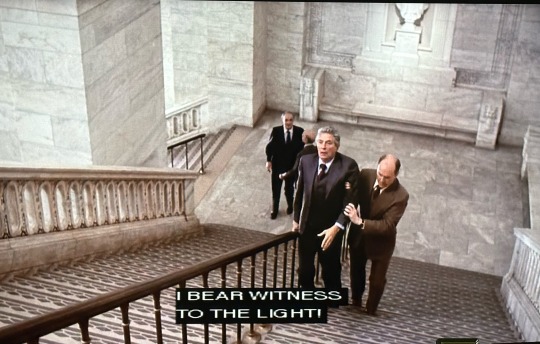
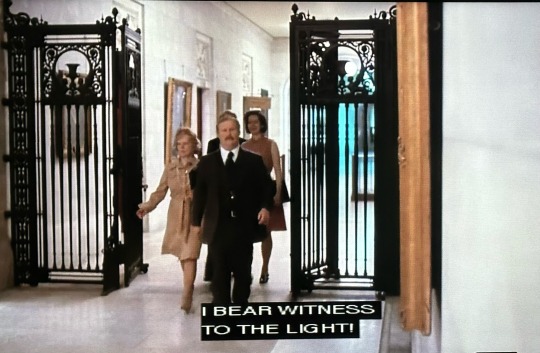
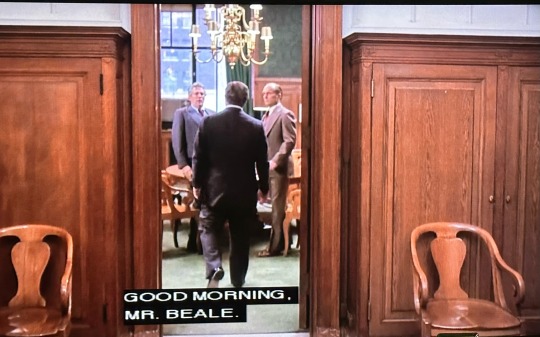


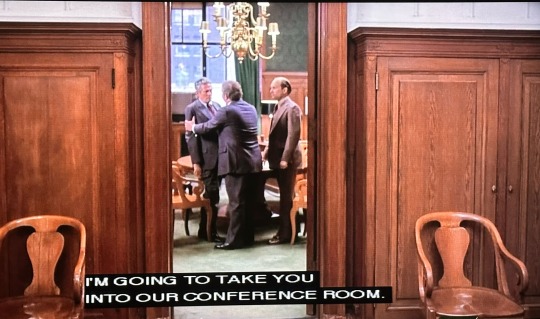



Libraries on Film: Network (1976)
I’ve seen this film half a dozen times, but it was only during my latest viewing that I recognized our Stephen A Schwarzman Building as one of the filming locations!
P.S. - Check out this list of more examples of movies & TV that used NYPL as a filming location!
2 notes
·
View notes
Photo

The exterior of the Stephen A. Schwarzman Building (or, the Main Branch of the New York Public Library) in John Guillermin‘s King Kong (1976).
2 notes
·
View notes
Text

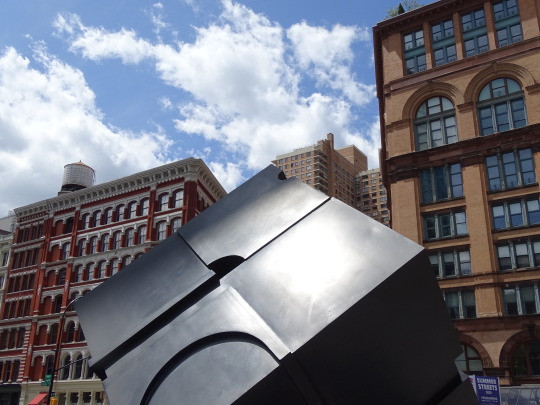
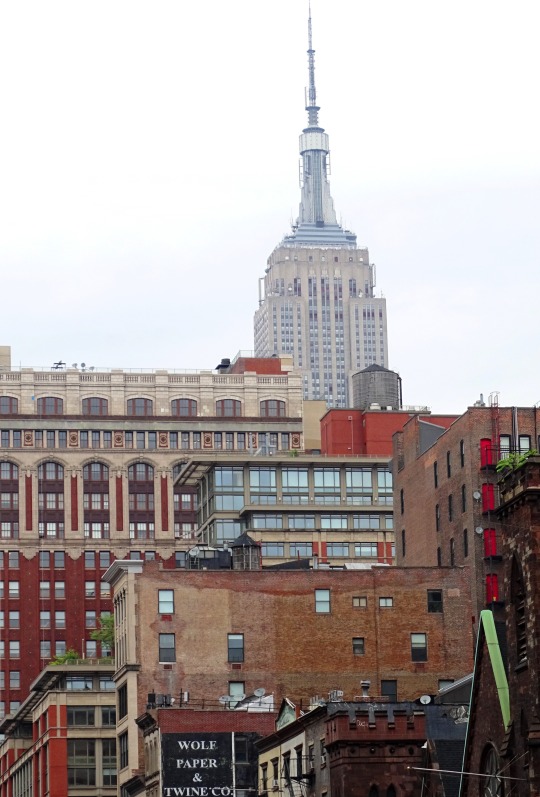





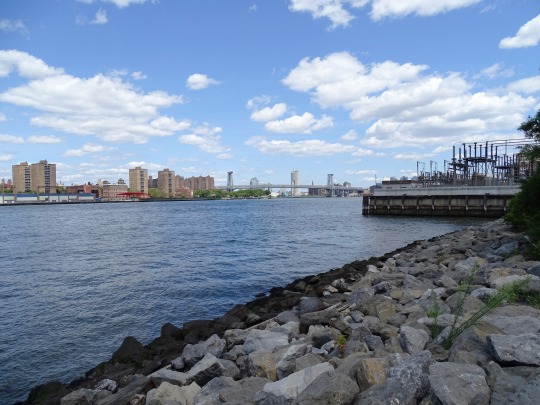

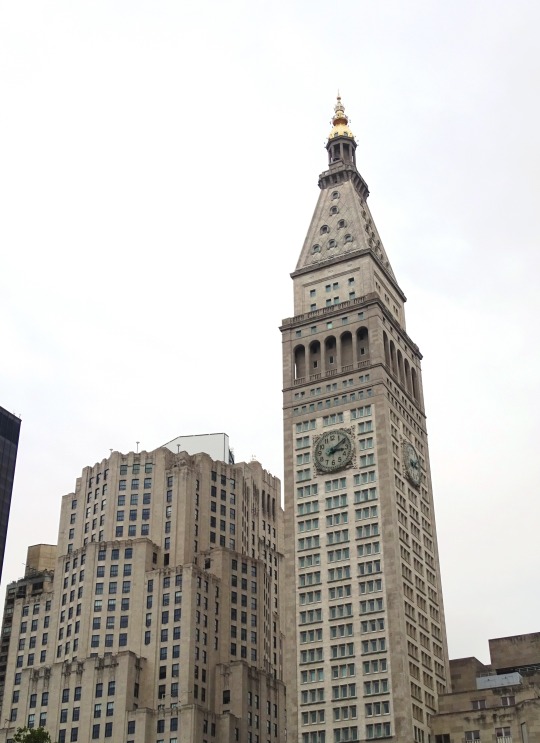


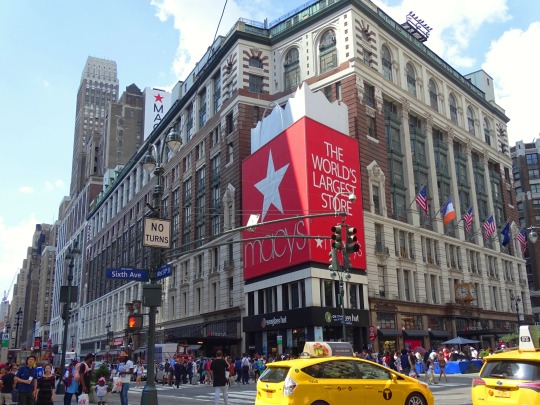
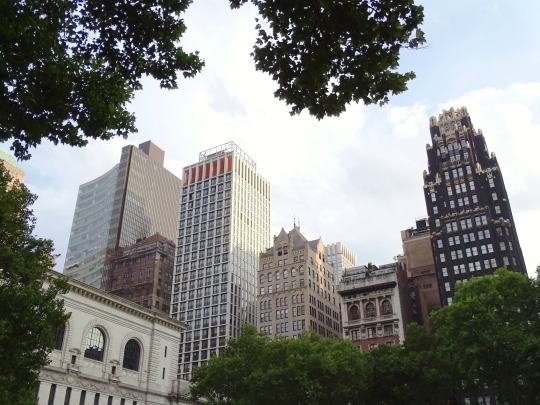
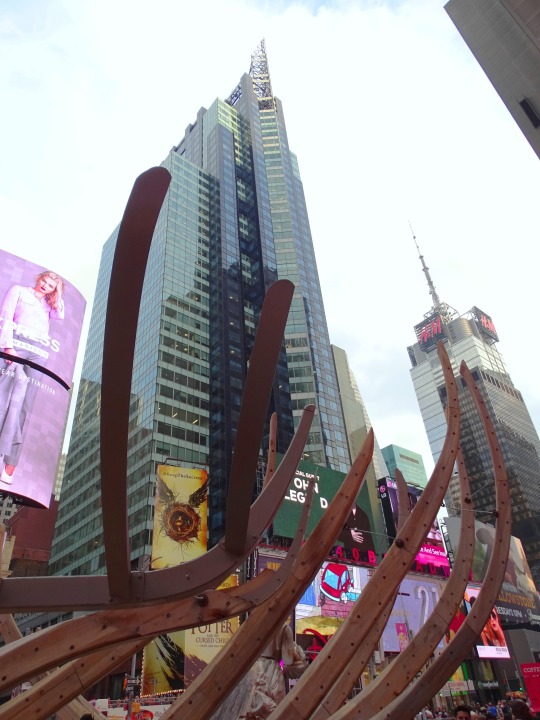




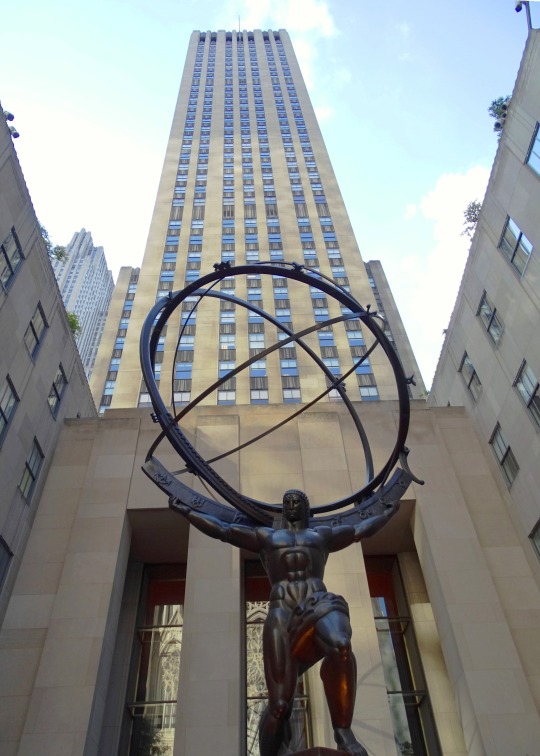
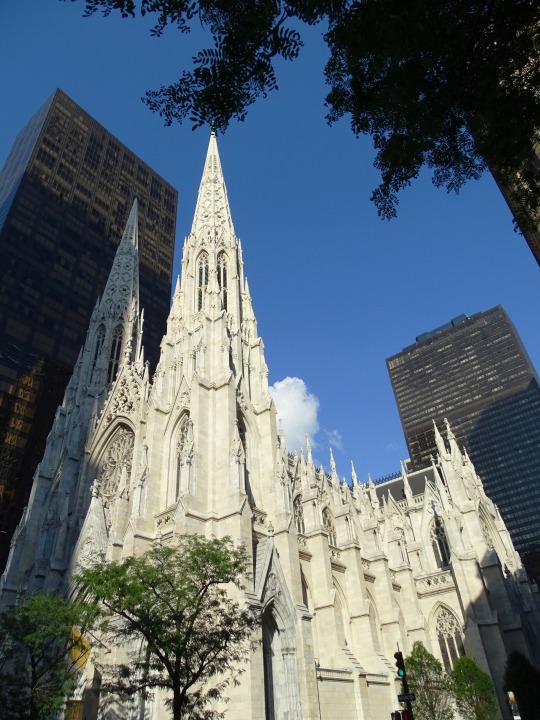
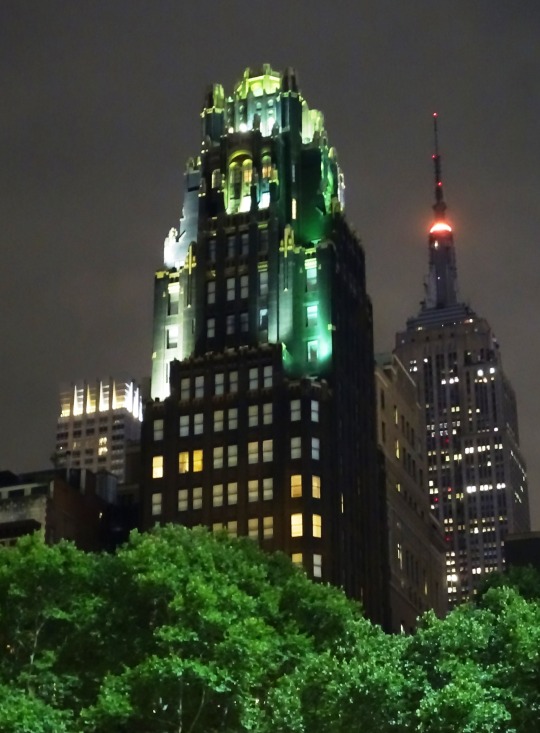

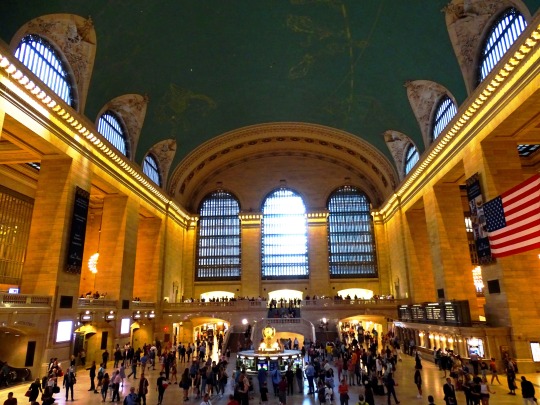
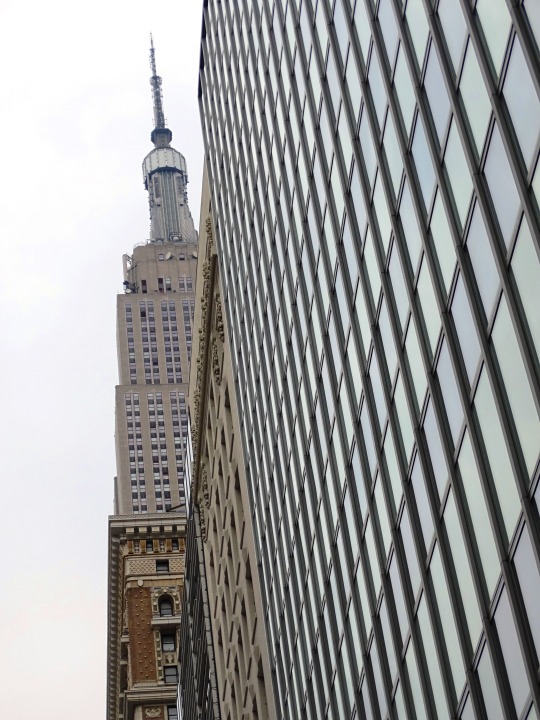

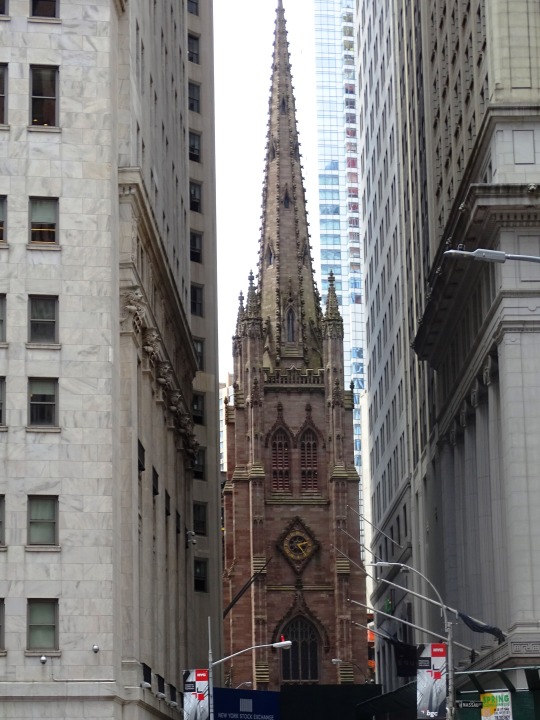
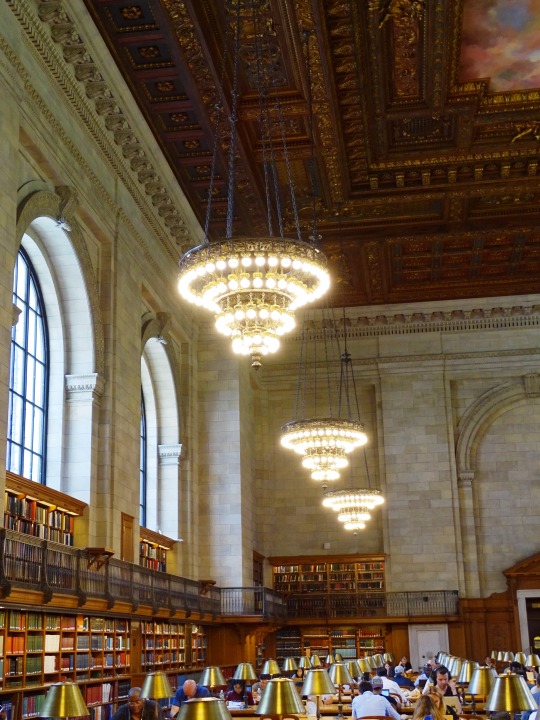
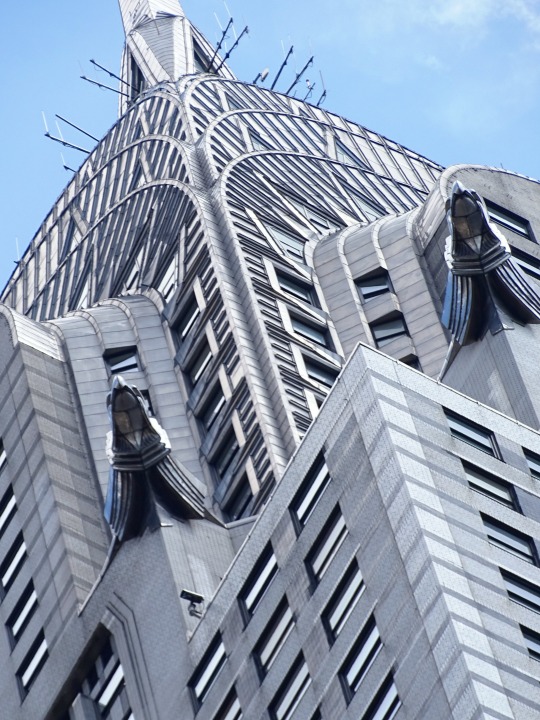
Peter Minuit “bought” Manhattan on May 24, 1626.
#summer 2019#2018#2013#original photography#Empire State Building#Chrysler Building#American Radiator Building#East River#Bryant Park#Stephen A. Schwarzman Building#Brooklyn#white colonialism#New York City#Peter Minuit#bought#Manhattan#24 May 1626#anniversary#US history#Alamo by Tony Rosenthal#architecture#cityscape#tourist attraction#USA#landmark#travel#vacation
34 notes
·
View notes
Text
New York City in Minecraft



Fun facts about New York City (NYC to you and me)
1. It has a subway system, and the trains are pretty neat.
2. New York has more people than any other city in the U.S. and over twice as many as London.
3. The Empire State Building is one of the world's tallest buildings, but it is not the tallest building in the U.S. because it does not have a spire.
4. The Statue of Liberty has a bald head because she lost her wig in a storm in 1858.
5. The subway has a map that shows where every station is located on the line.
6. A 'bagel' is actually a round bread, not a bread with a hole in it.
7. The Brooklyn Bridge was built in the late 19th century to help cars, not people.
8. The New York Public Library has two buildings: the Stephen A. Schwarzman Building (for books) and the Rose Reading Room (for people).
9. New York has over 25,000 taxis.
10. New York has at least 12 bridges across its five major waterways.
11. New York's Chinatown is the largest Chinatown outside of Asia.

A short little Minecraft story about New York City
Steve and Alex traveled to New York City to celebrate the New Year.
They had been on a few dates and were getting along great. Alex had been dating Steve for nearly two months now. The night before they were leaving for the trip, they went to dinner together at a nice restaurant. They both enjoyed themselves and drank a lot of wine. When they got back to Steve's apartment, he asked Alex if she wanted to continue their evening. He invited her in for some champagne and to watch a movie.
Alex was really enjoying herself and had a blast with Steve. They watched an old classic that Steve had rented, Casablanca. They both enjoyed the movie and it helped them get to know each other better. As the movie ended, Alex realized that it was late and it was time for her to go.
"Thanks for a great night," she said as they hugged.
"I'm glad you came over."
#new york city#nyc#minecraft#minecraft scenes#city scenes#minecraft landscape#minecraft nyc#minecraft art
4 notes
·
View notes
Text



2023.09.26 // 14:23 visited the main nypl building in bryant park the other day—took in some enchanting academia vibes
pic: new york public library schwarzman building, manhattan, n.y.
#549#mine#studyblr#studyspo#study inspo#study#student#study motivation#studyblrpositivity#studyblr community#studysthetics#study aesthetic#productivity#productivity aesthetic#academia#academia aesthetic#dark academia#dark academia aesthetic#chaotic academia#chaotic academia aesthetic#study inspiration#studying inspiration#study space#studywithme#college#collegeblr#university#uni#uniblr#university student
85 notes
·
View notes
Text
A new focus on understanding the human element
New Post has been published on https://sunalei.org/news/a-new-focus-on-understanding-the-human-element/
A new focus on understanding the human element

A new MIT initiative aims to elevate human-centered research and teaching, and bring together scholars in the humanities, arts, and social sciences with their colleagues across the Institute.
The MIT Human Insight Collaborative (MITHIC) launched earlier this fall. A formal kickoff event for MITHIC was held on campus Monday, Oct. 28, before a full audience in MIT’s Huntington Hall (Room 10-250). The event featured a conversation with Min Jin Lee, acclaimed author of “Pachinko,” moderated by Linda Pizzuti Henry SM ’05, co-owner and CEO of Boston Globe Media.
Initiative leaders say MITHIC will foster creativity, inquiry, and understanding, amplifying the Institute’s impact on global challenges like climate change, AI, pandemics, poverty, democracy, and more.
President Sally Kornbluth says MITHIC is the first of a new model known as the MIT Collaboratives, designed among other things to foster and support new collaborations on compelling global problems. The next MIT Collaborative will focus on life sciences and health.
“The MIT Collaboratives will make it easier for our faculty to ‘go big’ — to pursue the most innovative ideas in their disciplines and build connections to other fields,” says Kornbluth.
“We created MITHIC with a particular focus on the human-centered fields, to help advance research with the potential for global impact. MITHIC also has another, more local aim: to support faculty in developing fresh approaches to teaching and research that will engage and inspire a new generation of students,” Kornbluth adds.
A transformative opportunity
MITHIC is co-chaired by Anantha Chandrakasan, chief innovation and strategy officer, dean of the School of Engineering, and the Vannevar Bush Professor of Electrical Engineering and Computer Science; and Agustin Rayo, Kenan Sahin Dean of the School of Humanities, Arts, and Social Sciences (SHASS).
“MITHIC is an incredibly exciting and meaningful initiative to me as it represents MIT at its core — bringing broad perspectives and human insights to solve some of the world’s most important problems,” says Chandrakasan. “It offers the opportunity to shape the future of research and education at MIT through advancing core scholarship in the individual humanities, arts, and social sciences disciplines, but also through cross-cutting problem formulation and problem-solving. I have no doubt MITHIC will inspire our community to think differently and work together in ways that will have a lasting impact on society.”
Rayo says true innovation must go beyond technology to encompass the full complexity of the human experience.
“At MIT, we aim to make the world a better place. But you can’t make the world a better place unless you understand its full economic, political, social, ethical — human — dimensions,” Rayo says. “MITHIC can help ensure that MIT educates broad-minded students, who are ready for the multidimensional challenges of the future.”
Rayo sees MITHIC as a transformative opportunity for MIT.
“MIT needs an integrated approach, which combines STEM with the human-centered disciplines. MITHIC can help catalyze that integration,” he says.
Mark Gorenberg ’76, chair of the MIT Corporation, says MITHIC represents a commitment to collaboration, a spirit of curiosity, and the belief that uniting the humanities and sciences results in solutions that are not only innovative, but meaningful and lasting.
“MIT has long been a place where boundless ideas and entrepreneurial energy come together to meet the world’s toughest challenges,” Gorenberg says. “With MITHIC, we’re adding a powerful new layer to that mission — one that captures the richness of human experience and imagination.”
Support for MITHIC comes from all five MIT schools, the MIT Schwarzman College of Computing, and the Office of the Provost, along with philanthropic support.
Charlene Kabcenell ’79, a life member of the MIT Corporation, and Derry Kabcenell ’75 chose to support MITHIC financially.
“MIT produces world-class scientists and technologists, but expertise in the skills of these areas is not enough. We are excited that the collaborations catalyzed by this initiative will help our graduates to stay mindful of the impact of their work on people and society,” they say.
Ray Stata ’57, MIT Corporation life member emeritus, is also a benefactor of MITHIC.
“In industry, it is not just technical innovation and breakthroughs that win, but also culture, in the ways people collaborate and work together. These are skills and behaviors that can be learned through a deeper understanding of humanities and social sciences. This has always been an important part of MIT’s education and I am happy to see the renewed attention being given to this aspect of the learning experience,” he says.
“A potential game changer”
Keeril Makan, associate dean for strategic initiatives in SHASS and the Michael (1949) and Sonja Koerner Music Composition Professor, is the faculty lead for MITHIC.
“MITHIC is about incentivizing collaboration, not research in specific areas,” says Makan. “It’s a ground-up approach, where we support faculty based upon the research that is of interest to them, which they identify.”
MITHIC consists of three new funding opportunities for faculty, the largest of which is the SHASS+ Connectivity Fund. For all three funds, proposals can be for projects ready to begin, as well as planning grants in preparation for future proposals.
The SHASS+ Connectivity Fund will support research that bridges between SHASS fields and other fields at MIT. Proposals require a project lead in SHASS and another project lead whose primary appointment is outside of SHASS.
The SHASS+ Connectivity Fund is co-chaired by David Kaiser, the Germehausen Professor of the History of Science and professor of physics, and Maria Yang, deputy dean of engineering and Kendall Rohsenow Professor of Mechanical Engineering.
“MIT has set an ambitious agenda for itself focused on addressing extremely complex and challenging problems facing society today, such as climate change, and there is a critical role for technological solutions to address these problems,” Yang says. “However, the origin of these problems are in part due to humans, so humanistic considerations need to be part of the solution. Such problems cannot be conquered by technology alone.”
Yang says the goal of the SHASS+ Connectivity Fund is to enhance MIT’s research by building interdisciplinary teams, embedding a human-centered focus.
“My hope is that these collaborations will build bridges between SHASS and the rest of MIT, and will lead to integrated research that is more powerful and meaningful together,” says Yang.
Proposals for the first round of projects are due Nov. 22, but MITHIC is already bringing MIT faculty together to share ideas in hopes of sparking ideas for potential collaboration.
An information session and networking reception was held in September. MITHIC has also been hosting a series of “Meeting of the Minds” events. Makan says these have been opportunities for faculty and teaching staff to make connections around a specific topic or area of interest with colleagues they haven’t previously worked with.
Recent Meeting of the Minds sessions have been held on topics like cybersecurity, social history of math, food security, and rebuilding Ukraine.
“Faculty are already educating each other about their disciplines,” says Makan. “What happens in SHASS has been opaque to faculty in the other schools, just as the research in the other schools has been opaque to the faculty in SHASS. We’ve seen progress with initiatives like the Social and Ethical Responsibilities of Computing (SERC), when it comes to computing. MITHIC will broaden that scope.”
The leadership of MITHIC is cross-disciplinary, with a steering committee of faculty representing all five schools and the MIT Schwarzman College of Computing.
Iain Cheeseman, the Herman and Margaret Sokol Professor of Biology, is a member of the MITHIC steering committee. He says that while he continues to be amazed and inspired by the diverse research and work from across MIT, there’s potential to go even further by working together and connecting across diverse perspectives, ideas, and approaches.
“The bold goal and mission of MITHIC, to connect the humanities at MIT to work being conducted across the other schools at MIT, feels like a potential game-changer,” he says. “I am really excited to see the unexpected new work and directions that come out of this initiative, including hopefully connections that persist and transform the work across MIT.”
Enhancing the arts and humanities
In addition to the SHASS+ Connectivity Fund, MITHIC has two funds aimed specifically at enhancing research and teaching within SHASS.
The Humanities Cultivation Fund will support projects from the humanities and arts in SHASS. It is co-chaired by Arthur Bahr, professor of literature, and Anne McCants, the Ann F. Friedlaender Professor of History and SHASS research chair.
“Humanistic scholarship and artistic creation have long been among MIT’s hidden gems. The Humanities Cultivation Fund offers an exciting new opportunity to not only allow such work to continue to flourish, but also to give it greater visibility across the MIT community and into the wider world of scholarship. The fund aspires to cultivate — that is, to seed and nurture — new ideas and modes of inquiry into the full spectrum of human culture and expression,” says McCants.
The SHASS Education Innovation Fund will support new educational approaches in SHASS fields. The fund is co-chaired by Eric Klopfer, professor of comparative media studies/writing, and Emily Richmond Pollock, associate professor of music and SHASS undergraduate education chair.
Pollock says the fund is a welcome chance to support colleagues who have a strong sense of where teaching in SHASS could go next.
“We are looking for efforts that address contemporary challenges of teaching and learning, with approaches that can be tested in a specific context and later applied across the school. The crucial role of SHASS in educating MIT students in all fields means that what we devise here in our curriculum can have huge benefits for the Institute as a whole.”
Makan says infusing MIT’s human-centered disciplines with support is an essential part of MITHIC.
“The stronger these units are, the more the human-centered disciplines permeate the student experience, ultimately helping to build a stronger, more inclusive MIT,” says Makan.
0 notes
Link
1 note
·
View note
Photo
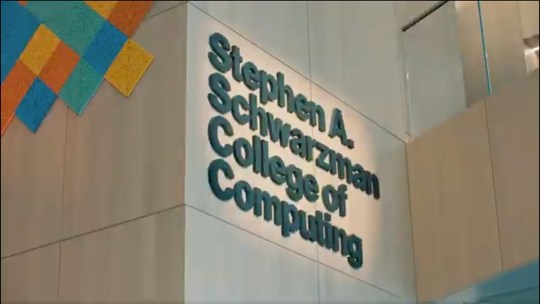
Marking a milestone: Dedication ceremony celebrates the new MIT Schwarzman College of Computing building | MIT News
0 notes